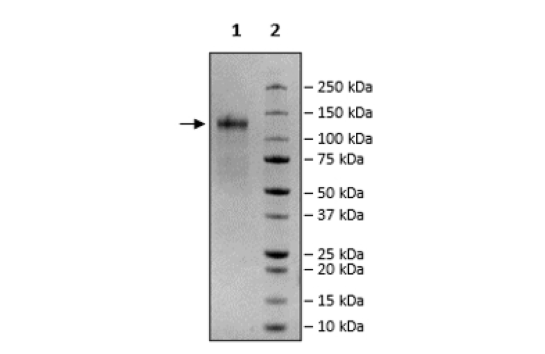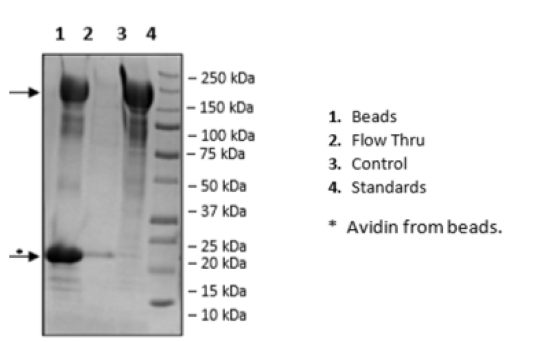VEGFR3, Avi-Tag, His-Tag, Biotin-Labeled Recombinant
Recombinant human VEGFR3 (Vascular endothelial growth factor receptor 3), extracellular portion encompassing amino acids 25-776. This construct contains a C-terminal Avi-Tag™ followed by a His-tag (6x His). This protein was affinity purified.
≥80%
Aqueous buffer solution.
8 mM phosphate, pH 7.4, 110 mM NaCl, 2.2 mM KCl, and 20% glycerol
This protein is enzymatically biotinylated using Avi-Tag™ technology. Biotinylation is confirmed to be ≥90%.
For more information on enzymatic biotinylation, please see our Tech Note.
VEGFR3 (also known as FLT4, fms related receptor tyrosine kinase 4) is one of three VEGFRs and has VEFGC and VEGFD as ligands. Its main roles are in angiogenesis, lymphangiogenesis, and vasculogenesis. VEGFR3 is a transmembrane receptor expressed as a homodimer, with tyrosine kinase activity. This protein can exist as three isoforms: full length, an isoform missing 65 amino acids on the C-terminus, and a third isoform missing a larger fraction of the C-terminus including the transmembrane domain. This third form is soluble and seems to function in sequestering VEGFC in the retina. VEGFR3 can form heterodimers with VEFGR2 and bind VEGFC, functioning in angiogenesis and hematopoiesis. Dysfunction of this protein can result in Milroy disease, congenital heart disease and cancer. The use of inhibitors targeting VEGFR3 can reduce angiogenesis and be beneficial in cancer therapy.



